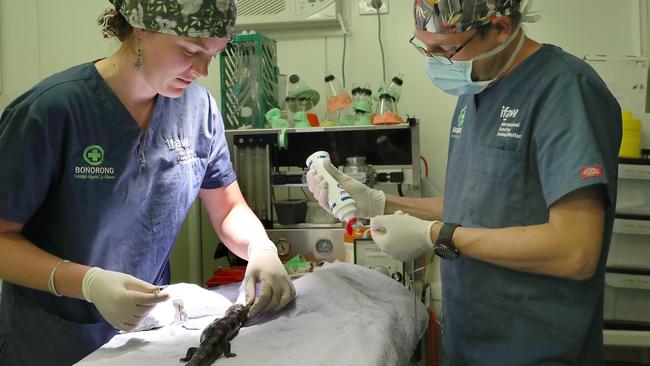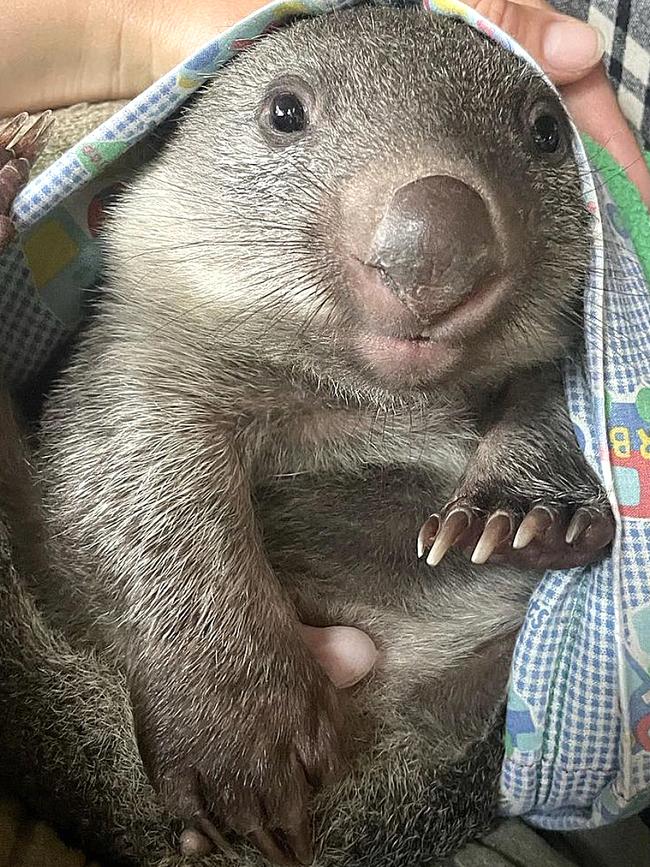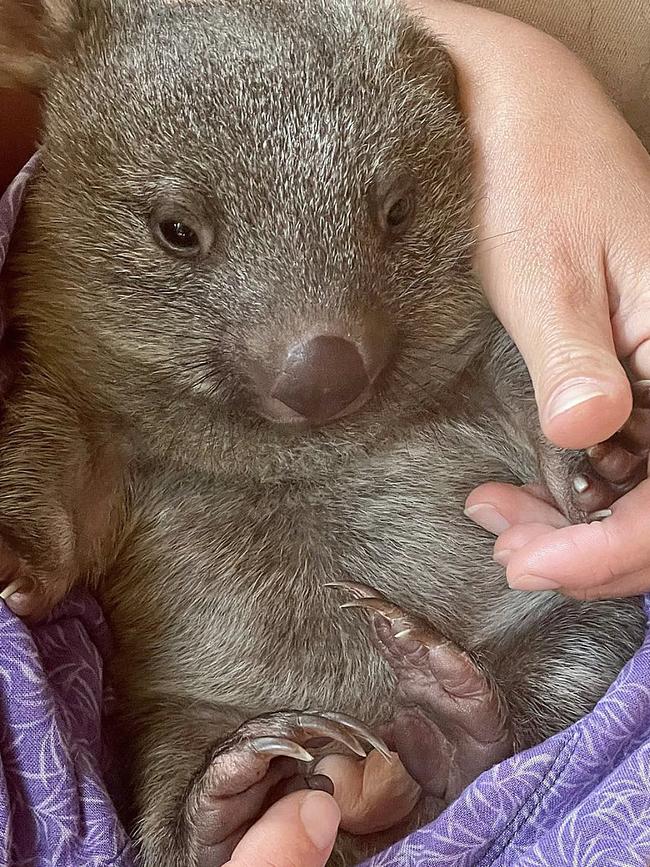‘Roadkill capital of the world’: Plea for drivers to slow down
Baby wombat Noel was rescued from the side of the road after his mum was killed and he was left injured by a driver on Christmas Eve.

News
Don't miss out on the headlines from News. Followed categories will be added to My News.
WILDLIFE carers have urged drivers to slow down as the number of native animals killed on Tasmanian roads surges over summer.
Bonorong Wildlife Sanctuary Director Greg Irons said up to half a million animals are killed on Tasmanian roads every year, with carers noting an increase in calls for injured wildlife over the tourist season.
“Tassie’s sort of like got this title as the roadkill capital of the world. That comes down to the amount of animals that are killed compared to our size,” Mr Irons said.
“The amount of calls that we receive each year is never goes backwards, so that suggests that every year that number is probably getting higher.”
Mr Irons said one of the easiest things drivers can do is simply “slow down” and being on the road at night, dusk and dawn.

“You never know how you’ll react when a devil runs out front of you or a wombat,” he said.
“Our reaction time going at 80km/h instead of 100km/h on a highway is vastly different – you’ve got a chance just to slow down a bit to let the animal go by.’
Mr Irons wildlife said some of the common places animals are found injured are not in remote areas or the bush, but near major centres.
“Hobart and Launceston would be two of our busiest areas – our most common places that we get calls for injured wildlife basically correlate to where people live.”

Baby wombat Noel was taken in by volunteer animal carer Susanne Buetow, of Wild Hearts Rescue, after he was injured in a road accident on Christmas Eve at Bothwell, north of Hobart.
“His mum was hit by a car. It looks like the little one probably got thrown out of the pouch and probably rolled over the gravel, because he had an injury on his right arm that needed to be treated,” she said.
Ms Buetow, who currently has four injured animals in her care, said the spring and summer period was usually the busiest for wildlife carers.
“Obviously, there are lots of tourists but also, locals are travelling a lot and that’s when accidents happen.
“The wildlife carers are really full to the brim at the moment. We desperately need more carers during this time, that’s for sure.”



